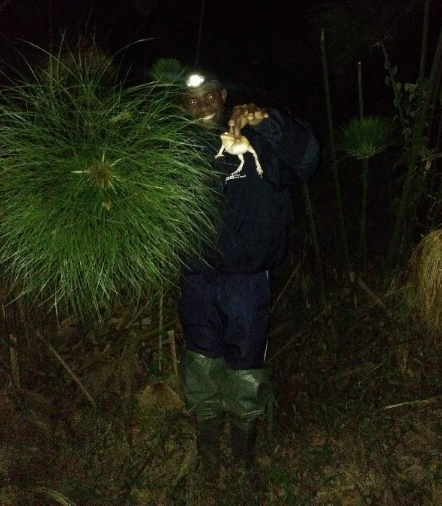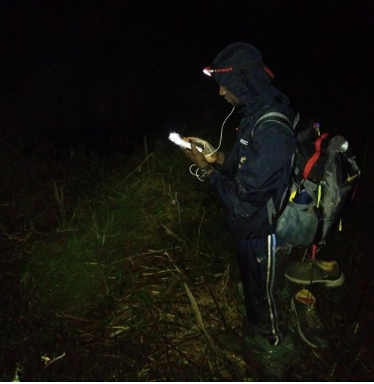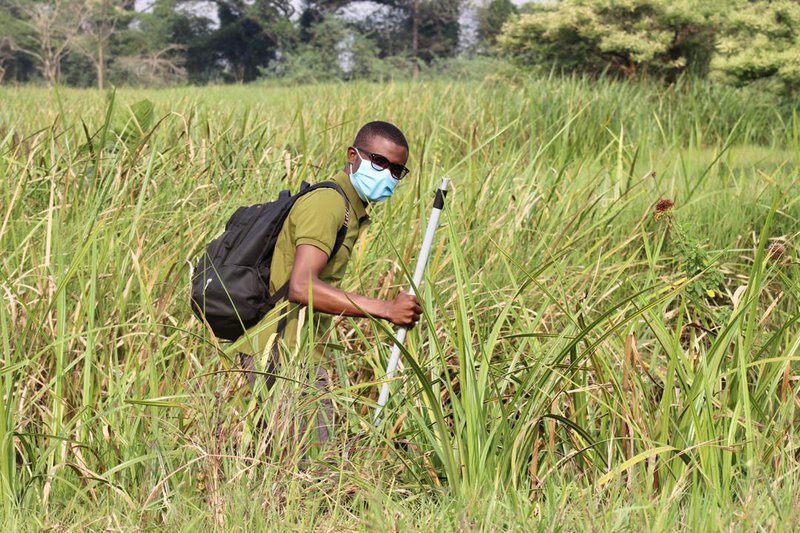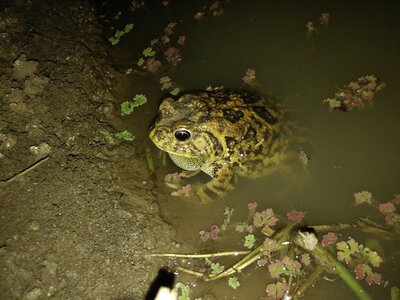Anuran calls can happen in a chorus of sounds during the day and night in the wetlands of Rwanda. Piiikpiiiiik……..Piiik piiiiik, Crooooooak Crooooooak Crooooooak, Tik-Tik… Tik Tik are amazing advertisement calls when these creatures are enjoying the beauty and resources in their habitats.
Reaching them shortly after sunset is the right time for sampling frogs and toads. The majority call during the night but a few species do call during both night and day.
Each call is distinct and can be confused with those of some birds and crickets. You must use your eyes and ears to confirm the call for a specific frog or toad calling remotely in a nearby wetland.
Sampling frogs in Rwanda is simply interesting!

You just need to be ready shortly after sunset equipped with your recording device, a PCM recorder or your mobile phone. It is the night; you need your led light to assure you are able to see and follow a path or transect until you hear or see a frog and you need to approach it to make an identification. Be steady when you are approaching a calling frog. It will immediately get quiet as it also hears you approaching its niche. So, to be successful, you need to be strategic!
You got it! You will see a calling male with its vocal sac bulging and its limbs holding fast on a branch of a tree or blade of grass.
Now you can record the call.

The calls appear as a chorus in your recording device and can be played to analyze what species was calling from where, of course when you remember to record the sampling site.
Sampling frogs is very important while assessing the status of a particular wetland. Frogs are important biological indicators for the health of a wetland. Species respond to different disturbance levels and this becomes a very good way to determine which species are specific to which disturbance level and hence, help to determine the status of a wetland, once this is confirmed for wetlands with similar structure also found to repeatedly consist of same species.
As frogs’ calls are species specific, using calls can be a crucial tool in identifying the different species at a particular site, and hence, species richness can be easily determined. There are a number of different types of software available such as Raven Lite/Pro or Adobe audition that can help you differentiate the call structures and also allow the counting of species abundance in a recording. All these are paramount in measuring the species diversity in a particular wetland.
Sampling frogs using their calls will only happen when it is not raining and mostly shortly after sunset in Rwanda. However, sampling can also be made by using an active search and visual survey where you can look along branches, tree trunks, grasses or in water bodies where frogs will be resting or hiding from predators.

This needs a conclusion, here is an example:
Sampling frogs is a relatively new exercise in Rwanda, and we believe it holds promise as a valuable tool to monitor the quality of wetlands and wetland ecosystem functioning. Sampling and gathering data on frog distribution and abundance goes hand in hand with the presence of a user-friendly information system that can host and make accessible these data to support mapping, modelling and early detection of environmental change using indicator species such as frogs.
Story by: Mapendo Mindje
Tweet
